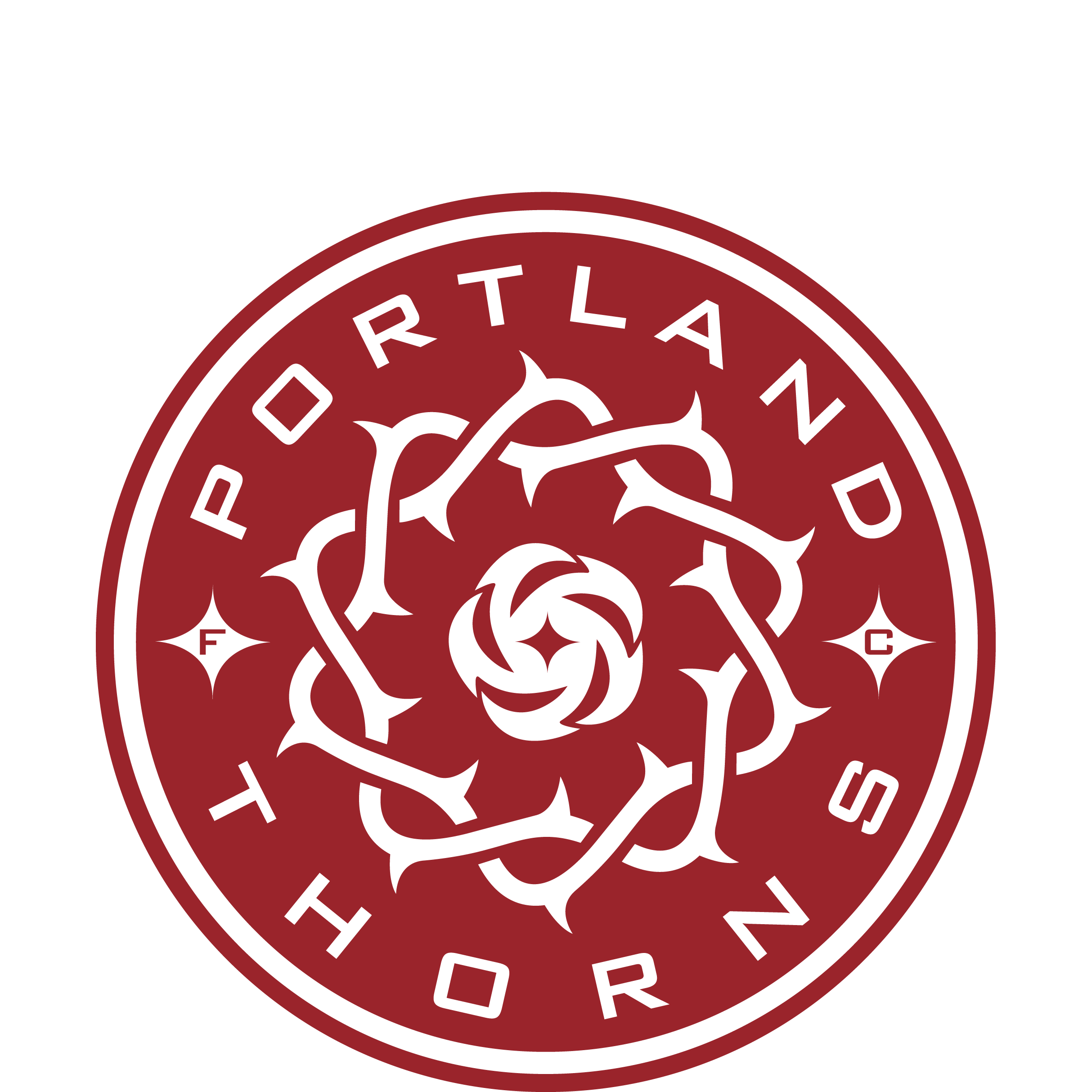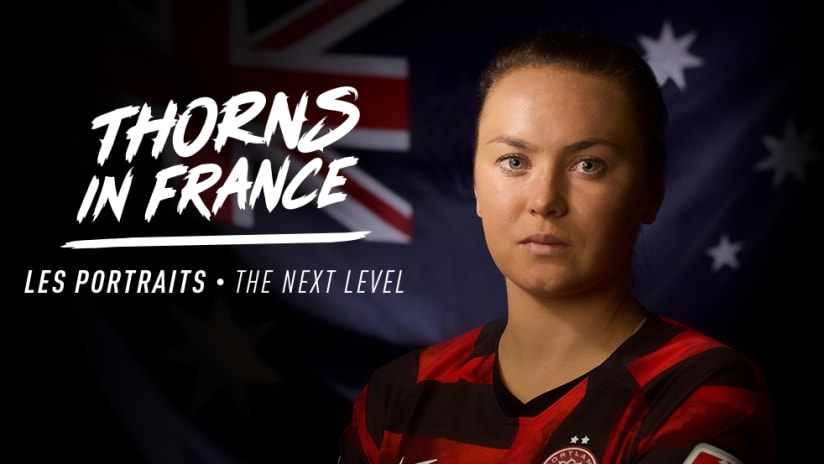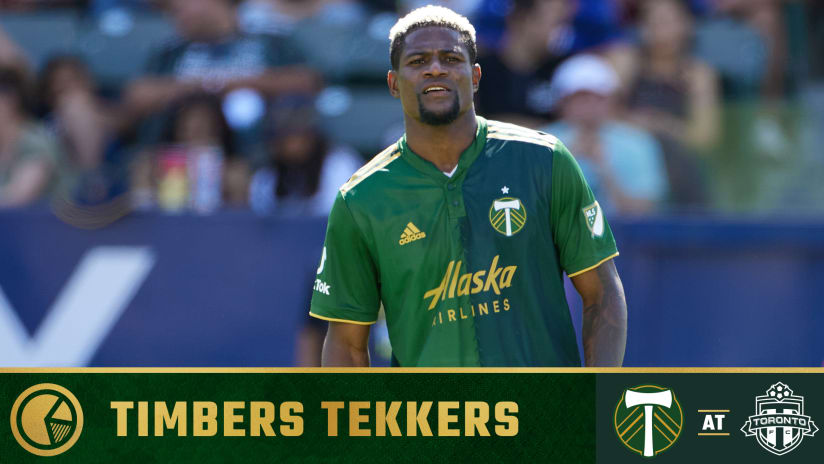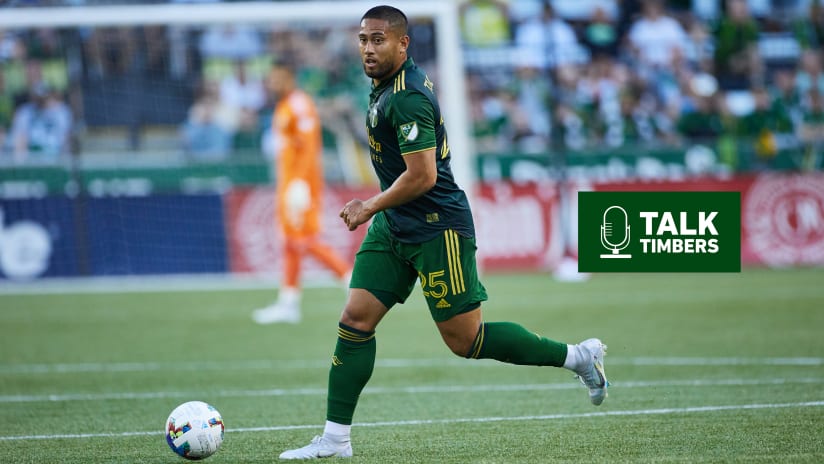PORTLAND, Ore. – Caitlin Foord is standing above the water, looking down at its unsettled surface from the pool’s highest diving board.
It’s 2011. Germany. She’s only 16 years old, but it’s summer in Europe. She’s certainly not the only teenager enjoying such great heights. Another one, her friend Sam, is standing next to her, ready to try the pair’s next set of back flips from the lofted platform, using every bit of angst in the surrounding adults to fuel their next vault.
“I was a little mischievous kid,” she says, now, thinking back to the person she was eight years ago. “With obviously the help of some friends, as well, around that time.”
Sam. Emily. Teigen. They’re all in Germany together, half a world away from their home, approaching the European summer as you’d imagine any group of teenage Australians would. Only this group of Aussies is part of a larger one, a group of 23, in Germany for one of the biggest sporting events in the world. This is Australia’s fourth consecutive FIFA Women’s World Cup, with the group of young hopefuls head coach Tom Sermanni’s assembled destined to grow into one of the most talented squads in the world.
Sam was Sam Kerr, somebody who, within six years, would be one of women’s soccer’s best players. Emily Van Egmond, by the time she was 25, had 85 appearances with her national team, while Teigen Allen, this summer, will go to France for her second World Cup.
“We had our little group,” Foord, now a Portland Thorns FC striker embarking on her third World Cups, remembers. “We would be out finding new things and just not trying to get into trouble. But normally we'd find ourselves in a little bit of trouble, just wanting to explore. And being 16 in a different country, it was always fun to get out and try to find new things.”
The high dive may not have been something new, but it’s the moment that comes to mind when she’s asked to define “mischievous.”
“When we were at the Germany World Cup, we were doing a recovery at this cool theme park,” she recalls. “There were rides, diving boards, this, that. Sam and I were really into doing backflips at the time. And we climbed to the top diving board and we're standing up there …
“We had already done a backflip and were going up to do it again. And we'd just seen our physio screaming from the other side and yelling at us to get down. And as she was coming closer, as she was coming screaming, we just did get a backflip off.
“We did find ourselves in a lot of trouble, because we were at a World Cup and could have got injured, easily. But being that age, we thought we were unstoppable and could do anything.”
Foord won Best Young Player at that World Cup and claimed the same honor from the Asian Football Confederation later that year. In 2016, she was named her confederation’s best player of any age. Kerr won that honor the next year, has a National Women’s Soccer League MVP award to her credit, and has become one of the most prominent athletes in Australia.
“She's still doing backflips,” Foord explains. “I've cooled. I don't think I could do it anymore. I'm not willing to try anymore.”
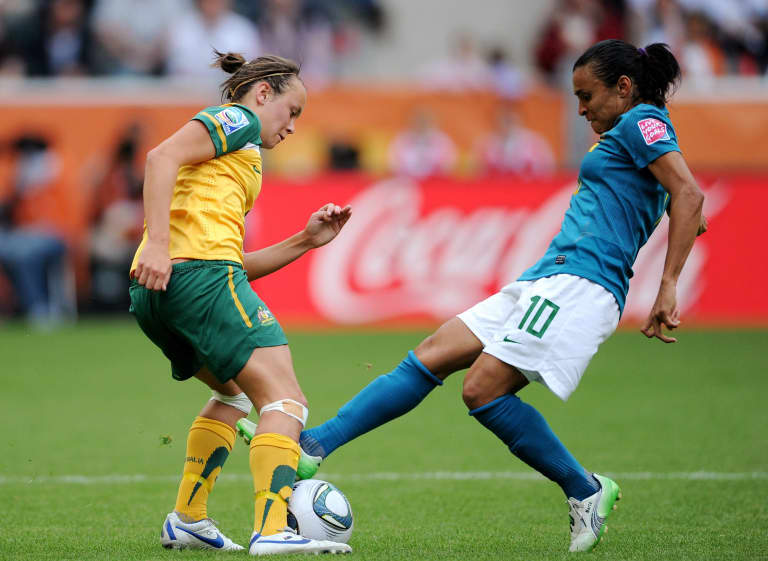
Caitlin Foord playing for Australia at the 2011 FIFA Women's World Cup | Image: USA Today Sports Images
The evolution in Foord’s focus is clear. In 2011, she was vacationing in Croatia when she found out she’d won her World Cup honor. Instead of flying back to Germany to accept her award in person, she stayed where she was.
“I found out over Facebook and I was like, ‘Cool.’ (I) just wanted to go back out and enjoy my holiday in Croatia.”
She’d do it differently, now. “I didn't really realize how much it meant, and how big of an award it was.” But there’s also a beauty in a young star embracing their place in time. For Foord, the World Cup was part of that, but with little idea of where her soccer was going, her time on Croatian shores was part, too.
In some ways, that’s when Foord’s soccer life truly changed. When she arrived in Germany, she was one of a crew of young Australians being groomed by Sermanni to take the Matildas to new levels. But that process largely took place at the edge of the world, beyond the few curious eyes who, before 2010, pursued to the women’s game like is now.
At that World Cup, though, the Aussies made a second-straight quarterfinal – a mild surprise, considering their overt youth moment – with Foord emerging as the team’s most celebrated young talent. From that moment on, world soccer’s spotlight was on her.
“[The attention] was just something that came with how I was going, and it wasn’t something that I was playing for,” she says. “It was just a reward that I didn’t really realize how big it was until a couple of years later, when I look back and I think, wow, that was really a cool thing to win.”
It was that “couple of years later,” after two seasons more seasons in Australia’s W-League, that Foord took her career’s first plunge, providing a glimpse of an ambition that often gets overlooked. Although over its six-plus seasons the NWSL has become a natural home for Australian talent, an 18-year-old Foord was one of only five Matildas to take the plunge in North America during the league’s inaugural 2013 season. Along with national team teammate Lisa De Vanna, Foord signed on with Sky Blue FC.
“I didn't really know or think about it,” she says, when asked how the 18-year-old Caitlin saw her career path. “I was just playing because that's what I was doing, and I knew this is what I wanted to continue doing as long as I could. But, I didn’t really think about where I would be going next or, now that I look back, thinking this would be my path as to where I've been and what I've done. It was just purely playing and taking it game by game.”
At the time, she was a lithe wide player, capable of playing anywhere on the flank, just being introduced to the habits she’d need to develop - a version of herself that shares only a striking resemblance to what, eight years on, she has become.
“At the time,” she admits, looking back on her days in Croatia, “I wasn't missing out on any fun.”
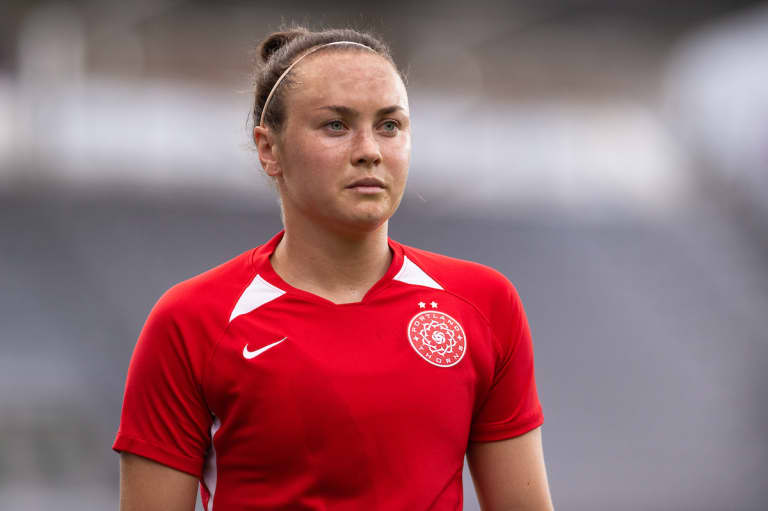
Image: ISI Photos
By 2013, Foord was going through an evolution, on multiple levels. Back home and with her national team, the potential people had always seen in her as an attacking talent – a potential the world scarcely saw in Germany, because of how she was used – was starting to emerge. She scored five goals in the two W-League seasons (22 games) before her NWSL arrival, four the next season, and slowly started developing into a different type of player. To the world, she was young, promising fullback. In reality, she had an attacker’s heart.
It was in the wake of a surgery Foord had in 2016 to treat a broken collarbone that other changes really began to take hold. Admittedly somebody who would avoid gym work when she was with Sky Blue, the time the then-21-year-old was forced to spend in the weight room recovering from her injury changed her physical profile. Before, while still quick, Foord was built to cover the long, lung-breaking distances that define life at a left or right back’s positions.
She still plays those spots today, occasionally, for Australia. At the 2015 World Cup in Canada, she was still used largely used in a defender’s role. But her profile is different, now. Today, strong and immovable with a low center of gravity, Foord exerts her physical dominance over short distances, exploding into space over short distances in the way strikers need to seek out the ball. She’s a forward first, now, with the lessons she’s learned off the field emboldening her new approach.
“It’s taught me to have to look after myself and to take more care,” she said, of not only her 2016 injury but the foot injury that would cost her half of 2018, as well as the small “quad and hammy” issues she’d have before becoming “more mature.”
“The little things that I probably wouldn't do before, or the kind of annoying things, they are important,” she concedes. “That’s just come with sitting out from the game. It makes you cherish those moments a lot more when you are back out playing, because there is nothing worse than having to sit on the sideline and having to watch.”
Foord scored twice for Australia against New Zealand in June 2016, the first multi-goal game of her international career. She repeated the feat almost a year later, in August 2017 against Brazil, and recorded her first international hat trick in November 2018, when she led the Matildas to a 5-0 victory over Chile. By then, her transformation from a player who the world saw as a young, emerging fullback to a physical, combative number nine was complete. Her 10 goals during the last W-League season for Sydney FC were second only to her one-time backflipping partner, Kerr (13).
That transformation may have left the spirit of the German amusement park behind her, but it’s also made her a better player. And, looking back on her first foray into Europe, the changes mean an entirely different Foord will, come June, be making her return to the continent.
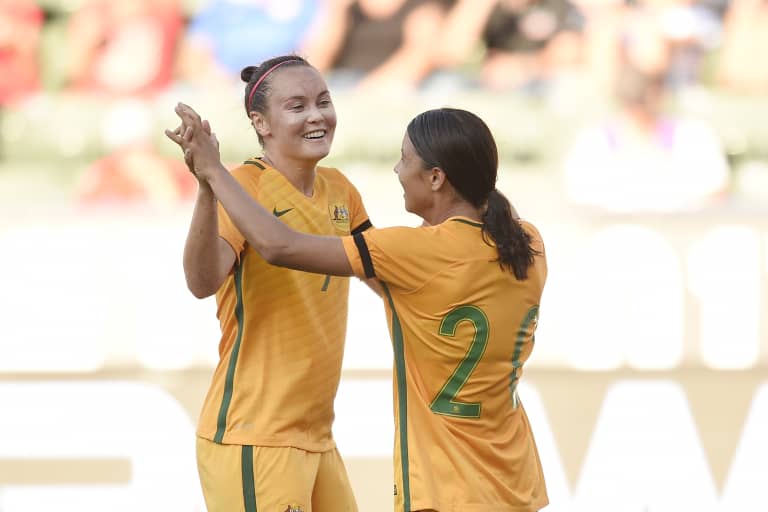
Caitlin Foord and Sam Kerr | Image: USA Today Sports Images
“There wasn't any expectation at all,” Foord remembers of 2011. The open eyes you’d see from atop an amusement park’s high dive may have helped her team’s run, but it also muted aspirations, and left the team content with a place in the quarterfinals. “We weren't really known to go a long way, or even had that pressure on us to make it far in the tournament.”
Eight years later, Foord words define the contrast between then and now.
“We 100 percent think we can win,” she says. There is no hesitation. “Last World Cup we went thinking we could win, as well. But I've said a couple of times now that going into Canada, we knew we could, but I think the belief was missing within the team.
“Four years round, we think we can win, and the belief is there that we can win. We just know if we are playing at our best as individuals and as a team, we can beat anyone.”
Foord’s belief goes beyond what her team can do. It also applies to her as an individual. Whereas in 2011 the beaches of Croatia had more draw than the podiums of Germany, the 2019 tournament will meet a player aware of her potential, and although she doesn’t talk about it often, her vision begins peaking out when you ask her, directly, “How good are you?”
“I'd like to think I'm good,” she begins, cautiously, before balancing modesty with reality. “I'm obviously still learning as well and developing. You always want to be better so I'm still trying to learn. And heading into this World Cup, I just want to be the best player and best form that I can be for the team.”
But that best player, and that best form. After eight years as a professional, time in three leagues, three World Cups, and major changes in position and physical profile, what is that best player, in her best form?
“I obviously want to be known as one of the best players in the world,” she admits, still short of confessing where, she thinks, she sits in her career’s progression. “I think, obviously performing at the top level does that …
“I'm in a really good place at the moment. Finally, feeling good again from my past injury. And I've been happy with how I've been playing. With the Matildas as well, we've been playing really well as a team.
“These upcoming months can change a lot of things if I'm at my best, and obviously the team as well.”
She admits that one day, she’ll want to play in Europe. “Champions League [is] something every footballer wants to play.
“But I just feel, at this moment in time, I'm obviously very happy with where I am at the Thorns, with my development, and I'm very happy [in Portland].”
Happy, but not satisfied. And in that way, there’s something that hasn’t changed from when Foord first conquered Europe as a 16-year-old. Then, atop that amusement park high drive, she was intent on making the most of her moment, fully maximizing the goals of her teenage self. Those goals have changed, now, but when she steps on the field next month in France, Foord will again be looking to take her career to another level.
If 2011 was the first step, 2019 is the next step. And she’s only 24. But at 24, she’s an entirely different player than the one that first won international prominence. In three weeks, the world will see for themselves.
